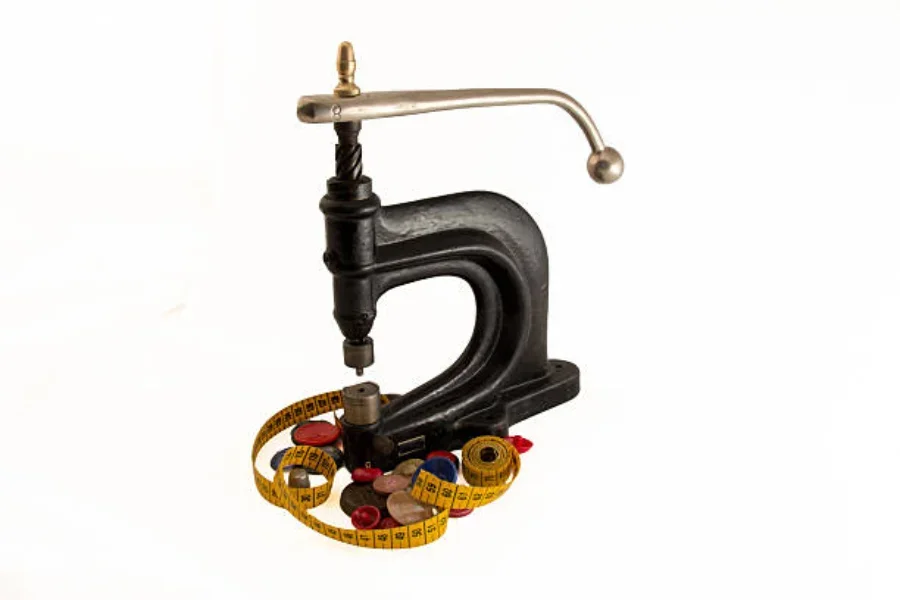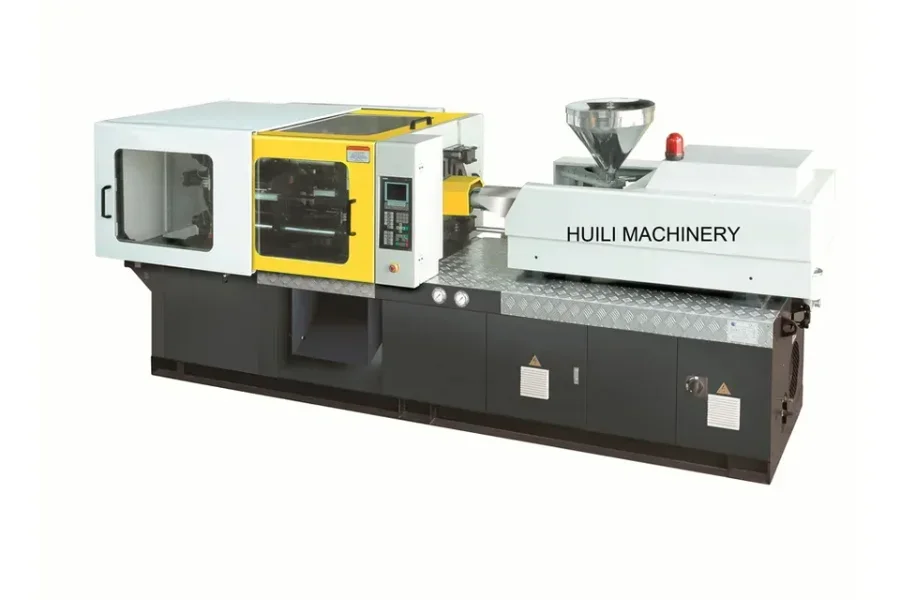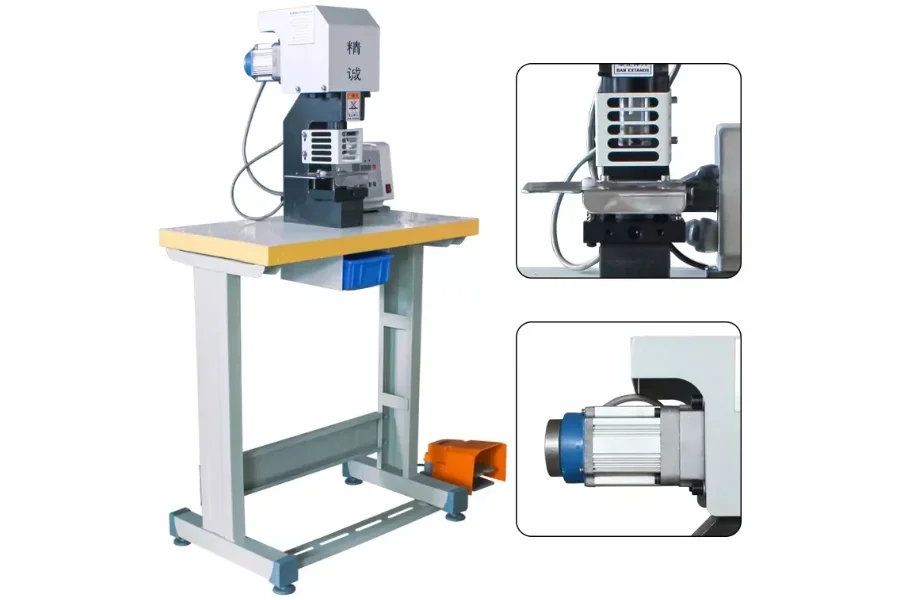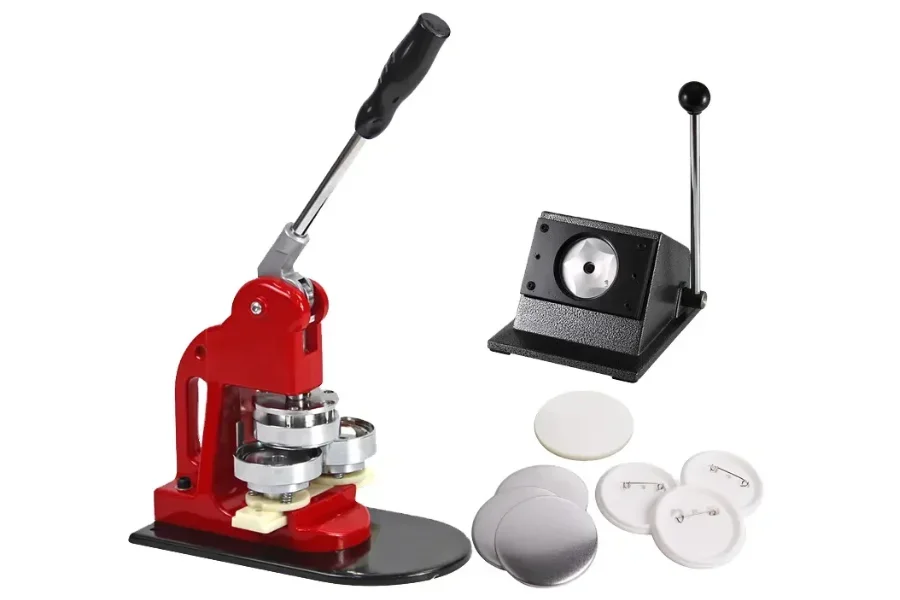Button-making machines are used to make professional buttons that can be sewn on. These machines have been used for many years and they are available in different types and sizes. Also, there are different models of button-making machines available in the market right now. If you are planning to invest in buying button-making machines, it is wise to gather all the relevant information first, including their capabilities.
In this article, we will look at the different types of button-making machines available and how to select suitable ones. Additionally, we are going to talk about the share, size, demand, and expected growth rate of the button-making machines market.
Table of Contents
Overview of the button-making machines market
Types of button-making machines
How to select suitable button-making machines
Conclusion
Overview of the button-making machines market

According to the Digital Journal, the global button-making machines market is mainly segmented based on product types and applications. Some of the key manufacturers include Badge-A-Minit, Zhejiang Juda Machinery, and Ningbo Xiangxi Import. The demand for button makers has been on a steady rise because the producers have adopted advanced technology to improve the efficiency of the machines. They also strive to meet the specific buyers’ needs and preferences, which will make the market expand further over the 2022-2028 period.
Based on product type segmentation, the demand for both semi-automatic and automatic button makers is rapidly increasing. This is due to increased application in various industries like apparel, textile, and fashion. The machines make high-quality buttons with rubber, leather, metal, fabric, plastic, and wood. Also, the increase in population across the world, together with the adoption of new trends in fashion, has boosted the need for button-making machines.
Regionally, the Asia Pacific is experiencing the greatest growth in the button makers market. This is because of the rising manufacturing units in countries like Japan, Chinese Taiwan, India, and China. Other regions with significant market share include North America, the Middle East, and Africa. This is a result of the government incentives to develop technology and infrastructure to support the button-making industry.
Types of button-making machines
1. Plastic button maker

Plastic button makers make pin-back buttons that are easily secured to clothing and other items. The machines have the capability to make various types of backings like bottle openers and magnets.
Pros
– It has a circular cutter making it easy to use and cut out designs.
– It is relatively cheap.
– It has a broad range of uses, for instance making pin-back buttons.
Cons
– It lacks alignment lines for the button face and backing.
– Most plastic buttons are less durable.
2. Fabric button maker

Fabric button makers create buttons that have a backing that can be sewn on. These machines are applicable for clothes, upholstery projects, and accessories. The fabric buttons have a soft texture and a specific thread count.
Pros
– It is small and thus an affordable option.
– It has a template to easily draw on the fabric and cut out the desired shapes.
Cons
– It can hurt as operators use their own force to press the button.
– It has a limited size range, so buyers require different kits for different sizes.
How to select suitable button-making machines
1. Type
When searching for button makers, buyers must decide whether they need plastic button-making machines, fabric ones, or both. Plastic button makers create pins or buttons that are sewn onto other projects. They make backings, including bottle openers and magnets. On the other hand, fabric button makers process buttons with fabric that can be sewn on. The type of machine also determines the shape of the buttons. The most common shape of buttons is round. Other machines can create square or rectangular-shaped buttons. However, non-circular button-making machines are limited in availability.
2. Cost
Button makers have various features that determine the range of prices they are valued at. On average, industrial button-making machines cost around USD 10,000-30,000. Durability is dependent on the material that is employed to manufacture the button makers and affects their cost. Other button-making equipment is made with plastics to lower the costs but is less durable. Furthermore, this solely depends on the demand of the business as buyers who need to frequently create buttons in bulk must invest highly to acquire high-performance and long-lasting metal machines.
3. Speed
The speed of a button maker determines the number of buttons created within a specific period like an hour. This is largely dependent on the efficiency of the machine and the demand from the production lines. On average, most electric automatic button makers have speeds up to 1,200 pieces per hour. A stable button production line would require a machine with the capability of making 300 buttons in an hour. DIY-oriented and small-scale businesses need machines with a speed of up to 50 buttons per hour.
4. Scope
This involves the number of buttons buyers intend to make and the various shades. This helps the buyers decide whether they need simple button makers or automated ones. Businesses that intend to frequently make numerous buttons with various distinct features and colors need sturdy button makers to match the production demand. Buyers that will sew buttons for household reasons or simply for fun need lightweight button pressers. They are portable, easy to assemble, and are not designed to be used intensively.
5. Usability
Most button makers are easy to install and operate. Buyers should select the right equipment that is easy to set up and use. The manuals that accompany the machines should be easy to understand. Essential information like how much pressure is needed for button making should be readily available. Buyers should note that basic and simple button makers do not require high pressures to produce buttons. Also, a machine with the appropriate size like a 2.25-inch button maker ensures a compact design that is easy to use and requires less storage space.
6. Structure

The structure of a machine shows its durability and sturdiness. This is based on the material used to make the equipment. Generally, button makers are manufactured using stainless steel or cast iron that are rust resistant. Some buyers prefer machines made from aluminum, which is also suitable due to its strength. This includes the metallic side plates, which should not be easily damaged. The base of the machine should preferably be made from plastic or acrylic because button-making is a light task. In addition, a rotating base is broad and thus requires more storage space compared to a sliding base.
7. Accessory
There is extra equipment that is vital to consider when buying button makers. For instance, the cutter. Several machines have in-built cutters while others lack them, so buyers will require another cutter to complement the button maker. Additionally, various button projects require accessories in varied sizes. Buyers should acquire button makers that can create buttons with different accessories. Some of these accessories include mirrors, magnets, badge reels, jump rings, bulldog clips, and mounted eyelets.
8. Button size
The most common round and industry-standard buttons are in sizes ranging from 1 to 3.5 inches. In this case, buyers should choose button makers suitable for creating photo buttons, fabric buttons, pinbacks, magnets, or jewelry. Also, the button openers will help buyers choose the appropriate size hence the kind of machine to be acquired. Button sizes have both merits and demerits. The most popular button size is 2.25 inches because it is not too big or too small.
Conclusion
It is crucial for buyers to learn the factors to consider before purchasing top-quality button makers. The machines should have the capability to support the various materials used to make buttons like plastic, metal, wood, or seashells. The above guide outlines the different parameters buyers should take into account to acquire suitable button makers. To find quality and efficient button-making equipment, visit Alibaba.com.




 Afrikaans
Afrikaans አማርኛ
አማርኛ العربية
العربية বাংলা
বাংলা Nederlands
Nederlands English
English Français
Français Deutsch
Deutsch हिन्दी
हिन्दी Bahasa Indonesia
Bahasa Indonesia Italiano
Italiano 日本語
日本語 한국어
한국어 Bahasa Melayu
Bahasa Melayu മലയാളം
മലയാളം پښتو
پښتو فارسی
فارسی Polski
Polski Português
Português Русский
Русский Español
Español Kiswahili
Kiswahili ไทย
ไทย Türkçe
Türkçe اردو
اردو Tiếng Việt
Tiếng Việt isiXhosa
isiXhosa Zulu
Zulu